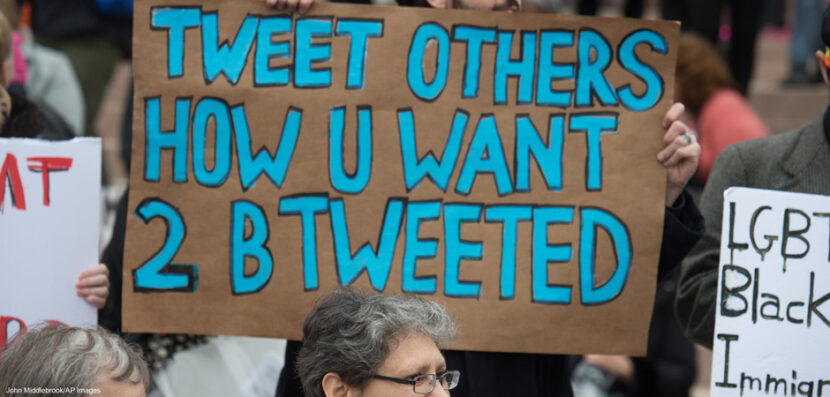- Current Events Nebraska Rejects Winner-Take-All Proposal
- Citizenship Voting Under Age 18
- Citizenship Citizenship in Action
- Democratic Party Biden’s and Trump’s Recent Primary Results
- Elections Trump and Biden Win South Carolina and Michigan Primaries
- Democratic Party Trump and Biden Win Big in Early February Contests

Political Activism and the Internet
Whether you love him or hate him, the election of Donald Trump to the presidency has stirred up a level of political activism and participation that hasn’t been seen since the 1960s. However, the constant flood of political news and information can very easily become overwhelming. Here, Election Central takes a look at the Internet as a tool for people to get involved, stay connected, and make their views known.
Web Sites and Web Tools
The Internet can be a great way to keep up with the latest political news quickly – and not just by checking in with traditional news media sources. The White House website, for example, allows you to read Trump’s executive orders yourself. You can also create Google News alerts on your representatives in Congress to keep up with what they are doing.
Dozens of new web tools are making the process of getting politically involved easier than ever before. For example, GovTrack allows you to select your location and a particular issue, and then you can view bills that have been introduced about that issue, as well as their progress. Similarly, PhoneCongress.com helps you to identify your local representatives and gives you information about what to say if you would like to contact him or her about an issue.
Social Media
Social media, such as Twitter and Facebook, can be a useful tool for mobilizing large numbers of people quickly. For example, the January 21 Women’s March on Washington and the recent widespread airport protests were all coordinated using social media. It can also be a great networking tool if you would like to get involved with a political activism group close to you (one popular example is Indivisible, a progressive alliance with chapters across the United States). Social media has the power to unify and mobilize people across the country (and even the world) behind a single, common idea – and to do it quickly.
Another advantage to social media is that it is accessible for people who might not otherwise been able to mobilize physically, such as people with disabilities or those who take care of young children. In other words, people who might not have had a voice in the political conversation before are now empowered to speak out.
Hashtag Activism
“Hashtag activism” refers to the similar process of using social media to form a coordinated movement or response to bring attention to an issue. #OccupyWallStreet and #BlackLivesMatter are both excellent examples. Last week’s silencing of Democratic Senator Elizabeth Warren on the Senate floor immediately produced the social media rallying cries #LetLizSpeak and #ShePersisted. Coordinating responses behind a single hashtag campaign brings much more attention to an issue than a few isolated tweets would, which is more likely to produce effective results.
Enthusiasm vs. Activism
Political commentators are quick to draw a line between “social media enthusiasts” and “social media activists”: in other words, clicking “like” on a friend’s political post does not make you a political activist. While enthusiasts are still important to the process because they help spread the word about an issue or event, critics argue that many people rely too heavily on social media enthusiasm as an outlet for their political passion, rather than putting in the actual work to effect change.
Social media activists, on the other hand, will use the internet and social media as a jumping-off point for physical activism. In other words, they tend to use social media as a tool to further their cause, such as creating a march or letter-writing event and then using social media to advertise for it.


